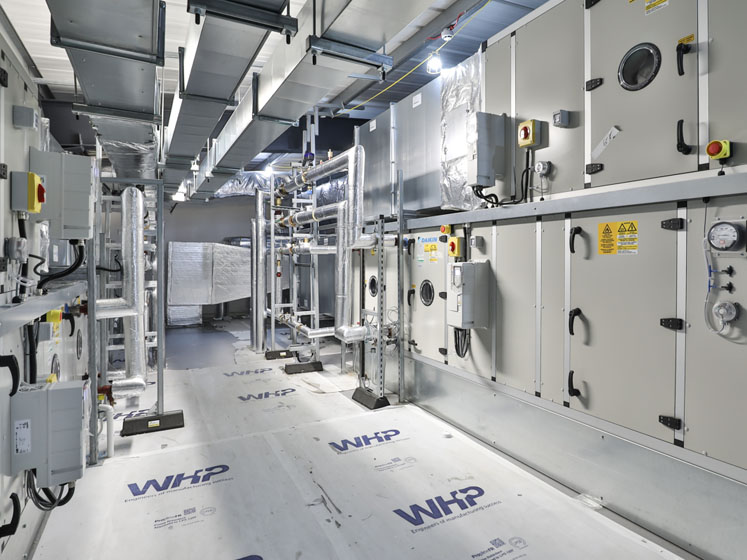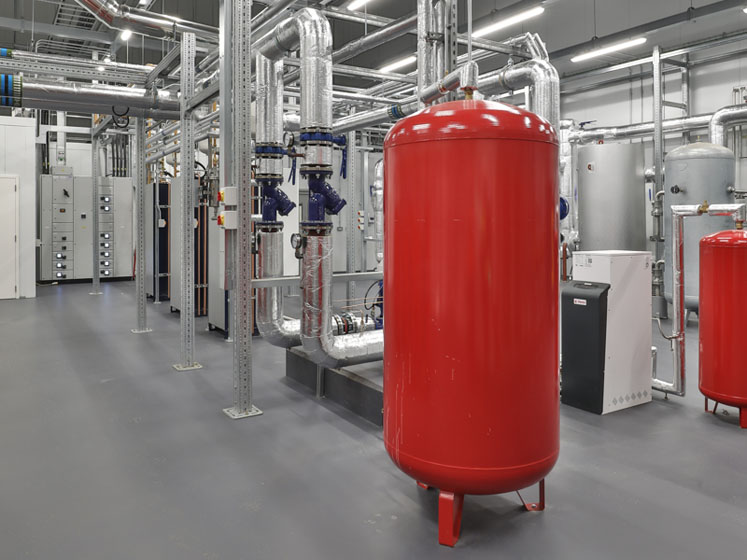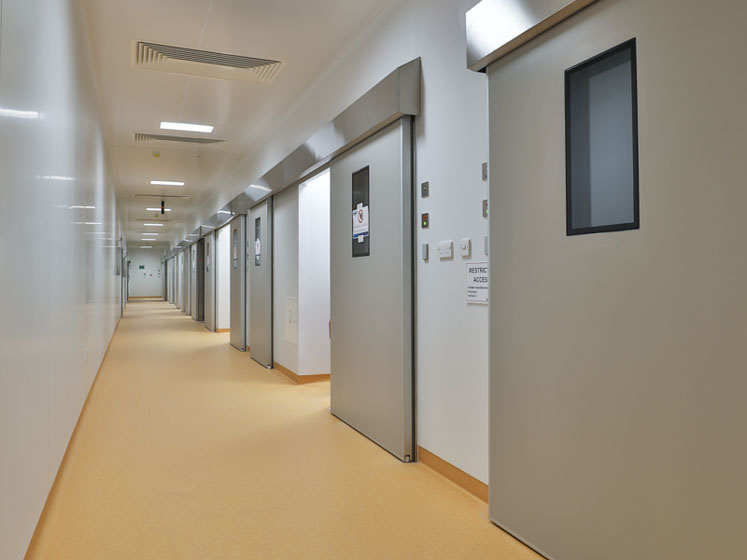WHP has 30 years of experience in the design, build, fabrication, commissioning and validation of clean manufacturing solutions and complex process systems for the life sciences, biomedical, healthcare and industrial manufacturing sectors. They were responsible for the fast-track design and build of Oxford Biomedica’s facility for the worldwide manufacture and distribution of the COVID-19 vaccine.
Understanding the end-to-end process and deciding on the best site
Both the customer and the contractor need to be clear about exactly how the product will be manufactured, how it will get to market and how it will be packaged and administered. Companies are naturally often keen to locate a new plant close to their existing facilities, but this may not be the ideal solution.
Overriding constraints may be access-to-market, the location of critical suppliers, the supply of raw materials, the ability to recruit skilled staff locally or — often overlooked — the proximity of primary packaging facilities.
Existing utilities and the ability to process waste products are key considerations. Manufacturing processes often consume large amounts of energy or water, and upgrading supplies is always expensive and may have a significant impact on lead times.
Mapping the production process from raw materials to end delivery is essential to highlight weaknesses and the potential for improvement. It may not be possible to achieve the optimum design initially, but this should be built into a strategic plan for the next phase of development following a successful product launch.

Identifying priorities
Contractors must engage with the customer at the outset to discuss key priorities and provide the most appropriate solution. In a regulated environment, quality will always be a priority. If time is critical, late delivery penalties will more than offset additional project costs in getting a building ready in the shortest possible time.
Particularly in the case of large companies, environmental impact is becoming a major agenda item. Many now have carbon zero targets and this will impact the solution that’s finally put in place. WHP has a longstanding commitment to sustainability and is involved in some new technologies that are effectively carbon neutral … but also deliver significant energy savings and attract grant funding.
It’s not automatically the first choice at present because it’s new technology, but it has been very well received by customers and small-scale trials have been very successful.
A “day in the life” of the plant
To understand exactly how the plant will be operated, we always produce a detailed “day in the life” scenario that involves talking to staff about user requirements and routines. They might plan to operate the plant 24/7, or on a shift pattern, and we can incorporate building management control systems that help to save energy.
We also look at the movement of people and materials to plan how the facility can be maintained and to minimise down time. Sometimes, it may be possible to significantly increase output within existing premises without the need to build a new or bolt-on facility from scratch.
Futureproofing
Many of our customers have put fallow areas into their facilities with critical utilities in place to allow for future expansion to be done quickly and at minimum cost. This obviously involves greater upfront expenditure but, in some cases, if this isn’t planned in advance, it may be impossible to expand owing to access issues or because it’s too disruptive.

Forward planning can also provide much greater flexibility and many manufacturers are seeing rapid advances in technology and the development of new therapies. We’re working with companies that are changing the use of their cleanroom facilities and we can help to factor in potential changes to certain production processes, for example, so that they will be suitable for smaller batch sizes or different end products. This means that the plant might be configured in a specific way to offer both larger areas and a number of smaller suites for bespoke products.
The pros and cons of modular designs and retrofits
The myth that needs to be busted is that modular will be cheaper. Standard portacabins will certainly be cost-effective, but if it’s bespoke and its modular, it could be more expensive than a traditional build.
WHP is always driven by the customer’s requirements. If speed is the main priority, modular could be the best solution. For example, if the customer has a site but hasn't received planning consent, it’s possible to produce a complete modular set-up for a facility that can be bolted together on site as soon as permission is granted.
This will then be indistinguishable from a conventional build. We’ve also built process equipment frameworks on skids for many years, which have been pretested and can be craned into place and connected up on site, saving time and money.
By contrast, we’ve had clients who were initially interested in modular designs, but detailed consideration of the architecture of their facility demonstrated that it wasn’t the best solution for them as it would result in an unworkable room configuration.

We are currently in the process of upgrading a Victorian listed pumping station in south London and constructing a GMP facility in the building. This is unusual but it’s great to repurpose a beautiful building and is also good for the environment. However, we’ve also had projects with what would initially appear to be ideal buildings but, after discussions and initial designs, have ultimately not turned out not to be the best option.
Regulation and security
We operate highly regulated facilities and there are stories of people who have built a plant but don’t have the approval to run it … and that’s a very expensive mistake to make. A huge amount of validation documentation is needed to support a new facility and document control is vital part of the process.
Understanding how you go through the approval process and demonstrate that a facility is fit for purpose is key. For example, we’ve built a number of cannabis oil facilities and it’s important to know the wall thickness required to stop people ram raiding them, simply to enable the customer to achieve Home Office approval.
Also, the residue after the oil is extracted is still very valuable and you must be able to demonstrate that the waste is neutralised and disposed of in a way that is environmentally sound. Security may become more of an issue with decentralised facilities and will depend on how attractive the product is to criminals. In the US, pharma manufacturing facilities are under increasing threat from criminal gangs.
These sorts of discussions are part of the reason why we’re always keen to engage as early possible with potential customers; it can help them to think about what's right for them and save a huge amount of time and expense both initially and during the lifetime of the facility.




